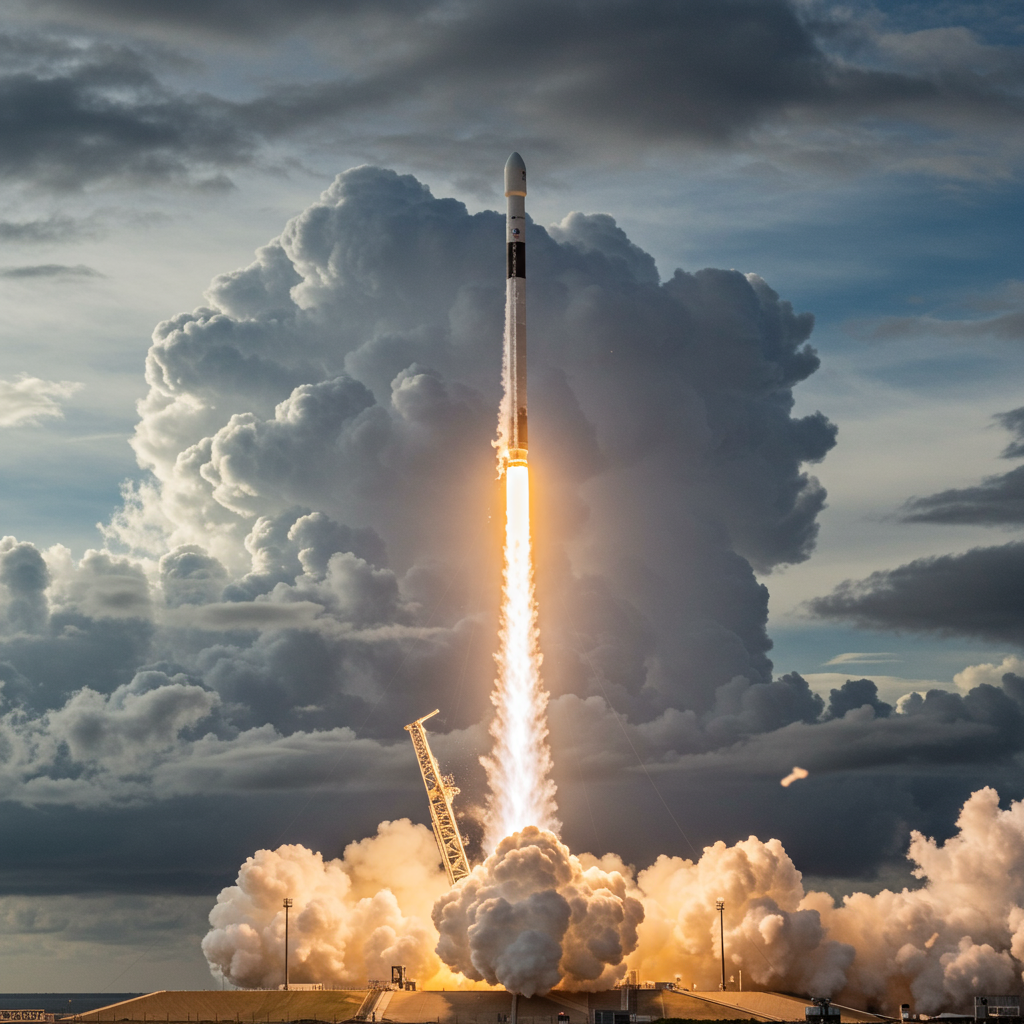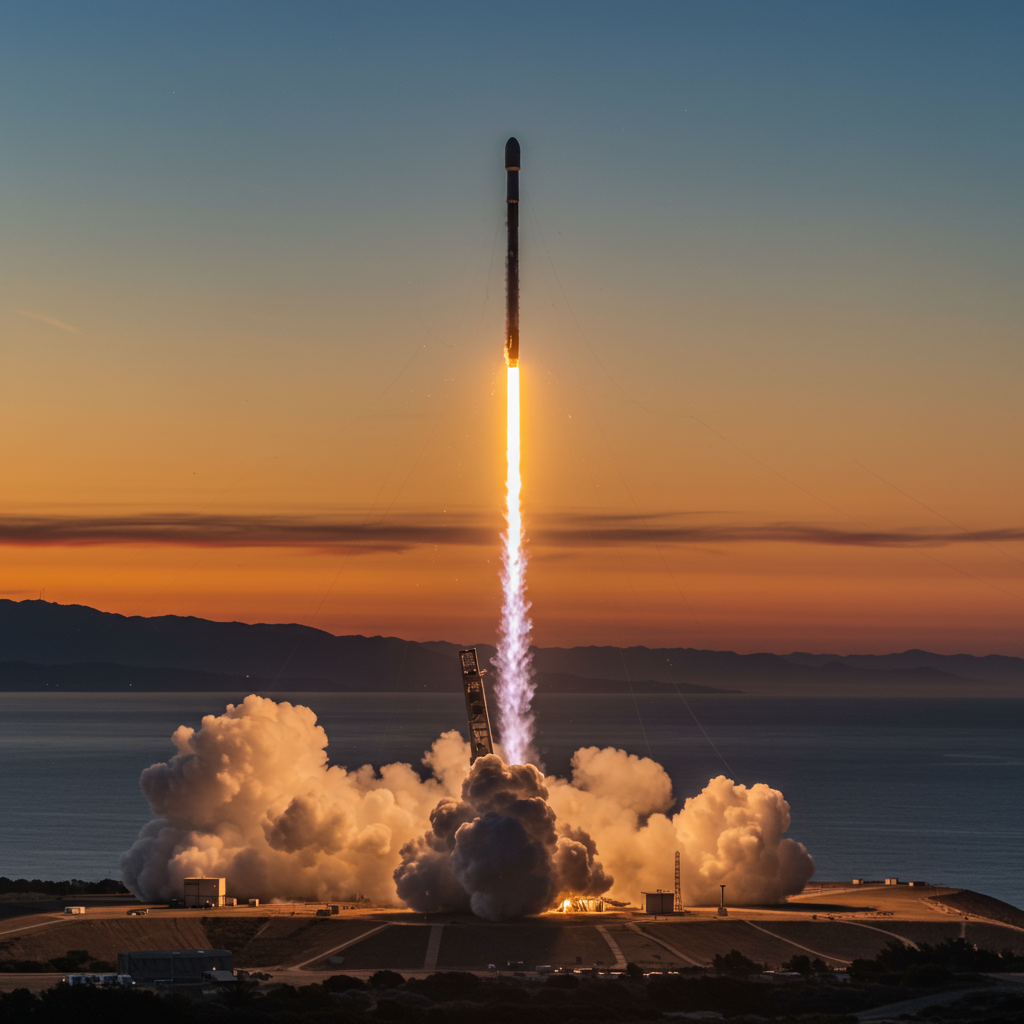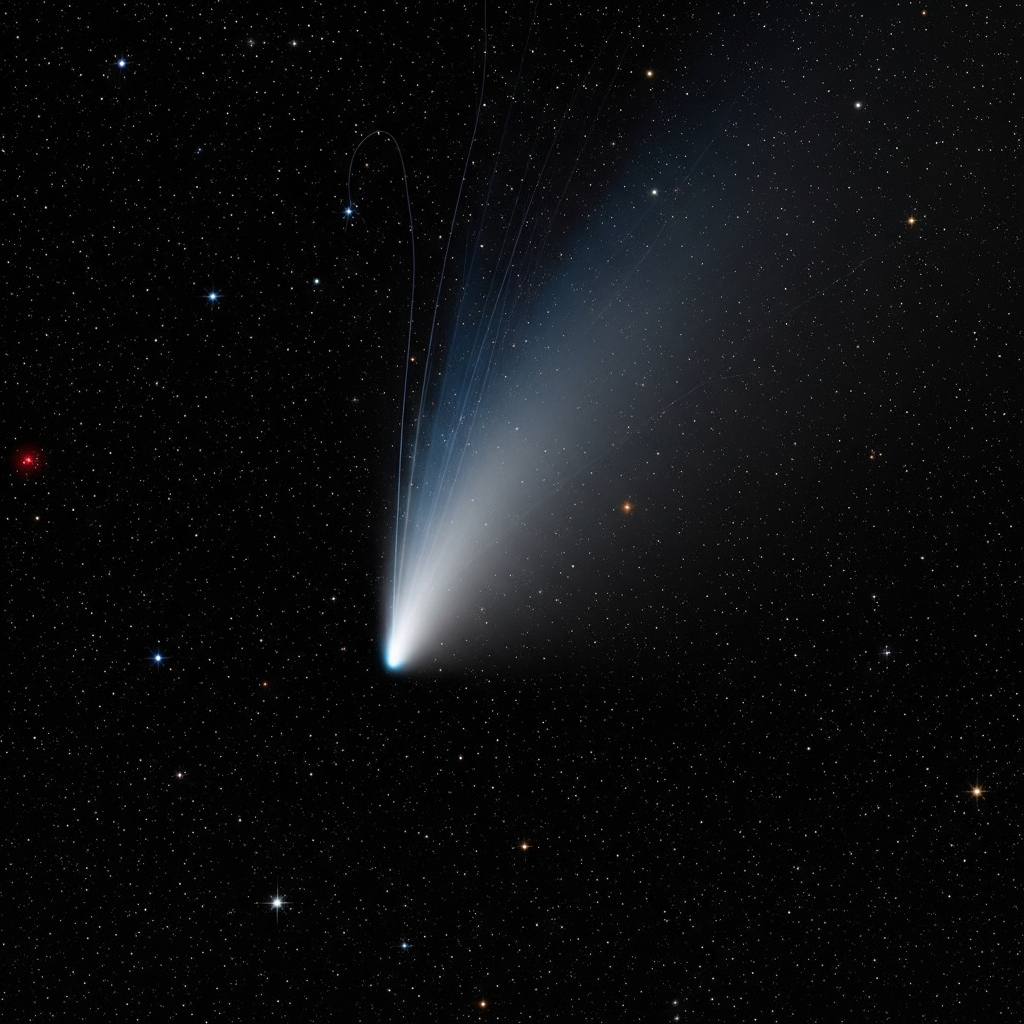Europe has successfully launched two critical Earth observation assets into orbit, poised to revolutionize weather forecasting and air quality monitoring across the continent and northern Africa. The Meteosat Third Generation Sounder (MTG-S1) satellite, carrying the Copernicus sentinel-4 instrument, lifted off on July 1, 2025, from Cape Canaveral, Florida. This mission represents a significant step forward in addressing pressing scientific and societal challenges, including predicting severe storms and tracking atmospheric pollution with unprecedented detail.
Developed through a robust partnership involving the European Space Agency (ESA), EUMETSAT, the European Commission, and leading European aerospace companies, the MTG-S1/Sentinel-4 launch underscores Europe’s commitment to advancing our understanding of Earth’s dynamic atmosphere. Their data will be vital for meteorologists, environmental scientists, and policymakers alike.
A New Era for European Earth Observation Begins
The launch took place aboard a SpaceX Falcon 9 rocket from Launch Complex 39A (LC-39A) at NASA’s Kennedy Space Center. Liftoff occurred precisely at 5:04 p.m. EDT, corresponding to 2104 UTC or 23:04 CEST on Tuesday, July 1, 2025. The successful flight marks a pivotal moment for the European space programs.
This mission is deeply embedded within Europe’s broader space infrastructure. MTG-S1 is part of the larger Meteosat Third Generation series, while the Sentinel-4 instrument contributes to the comprehensive Copernicus Earth observation program. Together, they provide vital services addressing global challenges like climate change and environmental protection.
Riding to Orbit: The Falcon 9 & Booster B1085
The launch vehicle for this crucial mission was the reliable SpaceX Falcon 9. This particular flight utilized booster B1085. It was the ninth successful launch and landing for this veteran first stage.
Just 8.5 minutes after clearing the launch tower, booster B1085 executed a precise landing. It touched down on the SpaceX drone ship ‘Just Read the Instructions’. This landing marked the 127th successful recovery for that specific vessel. The satellite payload continued its ascent on the rocket’s upper stage. Approximately 35 minutes post-launch, MTG-S1 successfully separated into a geostationary transfer orbit (GTO). This is the initial step on its journey towards a final geostationary Earth orbit.
Reaching Geostationary Orbit
MTG-S1 is destined for an altitude of roughly 36,000 kilometers (22,369 miles) above the equator. At this altitude, satellites orbit the Earth at the same speed the planet rotates. This allows them to remain fixed over a specific geographic area. This stable position is invaluable for continuous monitoring applications like weather tracking and environmental surveillance.
The satellite’s journey to its final geostationary slot will take approximately 17 days. Once in position, a critical phase begins. A significant 9-12 month commissioning period is required. This time is dedicated to rigorous instrument calibration and testing before the satellite can begin delivering operational data.
MTG-S1: Unveiling the Atmosphere in 3D
MTG-S1 is the second satellite in the ambitious Meteosat Third Generation series. The first satellite, the MTG-Imager (MTG-I1), was successfully launched in December 2022. The full MTG series is planned to include six satellites in total. These will operate as two sets of three: one sounder satellite (like MTG-S1) and two imager satellites (like MTG-I1 and MTG-I2, scheduled for 2026).
The core instrument aboard MTG-S1 is the Infrared Sounder. This is the first European hyperspectral sounding instrument ever placed in geostationary orbit. Hyperspectral sounding allows the instrument to collect highly detailed data across many spectral channels.
How the Infrared Sounder Works
The Infrared Sounder uses advanced interferometric techniques to capture critical atmospheric data. It measures parameters such as temperature, humidity, wind speed, and trace gases. This collected data is then used to generate three-dimensional maps of the atmosphere. These detailed 3D views significantly enhance the accuracy of weather predictions. The instrument boasts a resolution of 4×4 kilometers squared.
From its fixed position 36,000 km high, MTG-S1 will provide continuous coverage. Its primary focus area is Europe and parts of northern Africa. The Infrared Sounder will survey this region with a remarkably rapid repeat cycle of just 15 minutes. This frequent data refreshes give meteorologists near real-time insights into atmospheric conditions. It provides a complete weather picture that complements the cloud formation and lightning data delivered by the MTG-I satellites already in orbit. The combination of sounder and imager data promises over 50 times the amount of weather data available from the previous generation of Meteosat satellites.
Boosting Weather Prediction Capabilities
The data from MTG-S1 is expected to be game-changing for meteorologists. It enables sophisticated “nowcasting” capabilities, crucial for rapidly evolving severe storms. By providing detailed vertical profiles of atmospheric temperature and humidity, the sounder can detect atmospheric instability even before clouds begin to form.
This early detection, combined with the visual data from the MTG imagers, allows meteorologists to observe the full lifecycle of convective storms. This is anticipated to significantly improve the accuracy and timeliness of extreme weather warnings. Better predictions empower national meteorological services to issue more precise alerts, helping to save lives and minimize disruption caused by severe weather events.
Sentinel-4: Keeping a Watchful Eye on Our Air
While MTG-S1 is primarily a meteorological satellite, it serves a dual purpose. It hosts the crucial Copernicus Sentinel-4 instrument. Sentinel-4 is a partnership project with the European Commission. It represents Europe’s first dedicated mission for air quality monitoring from a geostationary orbit.
Sentinel-4 carries an ultraviolet, visible, and near-infrared light (UVN) spectrometer. This instrument is specifically designed to monitor air quality and pollution levels. Its fixed geostationary position allows it to maintain a continuous focus on Europe and northern Africa.
Tracking Key Air Pollutants
The UVN spectrometer delivers high-resolution data on various atmospheric trace gases and pollutants. These substances directly impact the quality of the air we breathe. The instrument measures reflected and direct sunlight to identify the spectral signatures of these gases.
Key pollutants monitored include nitrogen dioxide (NO2), ozone (O3), sulphur dioxide (SO2), and formaldehyde (HCHO). It also tracks aerosols. Sentinel-4 collects this detailed pollution data every 60 minutes during daylight hours. This high temporal resolution is essential for rapid forecasting and tracking pollution patterns.
Supporting Air Quality Forecasting and Public Health
The hourly data from Sentinel-4 directly supports the Copernicus Atmosphere Monitoring Service (CAMS). This data is invaluable for creating near real-time pollution forecasts. These forecasts empower decision-makers with critical information. They also aid public health efforts by providing timely warnings about poor air quality conditions. Sentinel-4 is expected to transform air quality prediction capabilities across Europe.
The Sentinel-4 mission on MTG-S1 complements other European satellite missions. It works alongside the polar-orbiting Sentinel-5 and Sentinel-5P missions, which provide daily global observations. Furthermore, Sentinel-4 is Europe’s contribution to an emerging global constellation of geostationary air quality sensors. It operates in concert with similar instruments like Korea’s GEMS (monitoring Asia) and NASA’s TEMPO (monitoring North America). Detecting these trace gases at parts per billion levels from 36,000 km away is an immense engineering challenge.
The Journey and What’s Next
The successful launch was the culmination of years of complex development and rigorous preparation. The mission faced delays compared to its original 2019 target date. These delays were attributed to the intricate nature of the onboard technology and unforeseen risks during development. Challenges also arose related to the European launcher situation, leading to the use of a SpaceX Falcon 9 for this launch, whereas MTG-I1 used an Ariane 5.
Just weeks before launch, the satellite underwent critical final preparations. This included the hazardous process of propellant loading. Experts loaded the satellite with approximately 2 tonnes (4,409 lbs) of highly toxic liquid propellants, MON3 and Monomethylhydrazine (MMH). This operation required stringent safety protocols, with a small team wearing specialized SCAPE suits. The satellite’s wet mass, including propellant, is around 3.8 tonnes (8,378 lbs).
Final Pre-Launch Steps
Prior to encapsulation within the rocket’s fairing, the MTG-S1 satellite was mated to its flight adaptor. This structure provides the crucial mechanical and electrical connection to the Falcon 9. This mating required extreme precision. Encapsulation marked the last time engineers could physically interact with the satellite. Its solar arrays remained folded, and instruments were off. The sounding instrument itself weighs approximately 400 kg (882 lbs).
Technological considerations in the satellite’s construction include the use of lightweight yet strong carbon fiber for structural stability. Special rubber materials were incorporated to dampen micro-vibrations. These vibrations could otherwise negatively affect the precision of sensitive instruments like detectors, lenses, and mirrors.
Commissioning Period
While the launch was successful, the data from MTG-S1 and Sentinel-4 will not be immediately available for public or operational use. The 9-12 month commissioning phase is vital. During this time, engineers will activate, test, and calibrate all instruments. This ensures the data they collect is accurate and reliable before it is distributed for operational forecasting and monitoring.
Collaboration Behind the Mission
These world-class Earth observation missions are the result of extensive European collaboration. EUMETSAT, the European Organisation for the Exploration of Meteorological Satellites, will manage mission control and data distribution for both MTG-S1 and Sentinel-4. ESA led the development and procurement of the satellites. The European Commission funded the Sentinel-4 instrument as part of Copernicus.
Prime contractors played crucial roles in the satellite’s construction. Thales Alenia Space served as the prime contractor for the overall MTG mission. OHB Systems was responsible for the MTG-Sounder instrument payload. Airbus Defence and Space served as the prime contractor for the Sentinel-4 instrument. This complex undertaking involved vast teams across numerous European industries.
Leaders from the involved organizations have highlighted the mission’s importance. ESA’s Director of Earth Observation Programmes, Simonetta Cheli, stated these missions will fundamentally change how severe weather and air quality are forecasted. Eumetsat Director General, Phil Evans, emphasized the value of entirely new data products for detecting atmospheric instability and tracking storm lifecycles. Christoph Kautz from the European Commission noted Sentinel-4’s expected improvements in monitoring capability and its critical data for CAMS. The combined data from MTG sounders and imagers is expected to be immense for responding to severe weather events, allowing for more advanced and accurate warnings.
Frequently Asked Questions
What are the main goals of the MTG-S1 and Sentinel-4 missions?
The primary goal of the MTG-S1 mission is to significantly improve weather forecasting, particularly for severe storms. It does this by providing detailed 3D maps of the atmosphere. The Sentinel-4 instrument, hosted on MTG-S1, is dedicated to monitoring air quality and pollution over Europe and northern Africa. Both missions aim to provide critical data addressing scientific and societal challenges.
Where can I find data from these satellites once operational?
Data from the MTG-S1 satellite and the Sentinel-4 instrument will be managed and distributed by EUMETSAT. The air quality data from Sentinel-4 will specifically feed into the Copernicus Atmosphere Monitoring Service (CAMS). While the satellites have launched, data will not be available immediately. A 9-12 month commissioning period is required for calibration and testing.
How will the new MTG-S1 data improve weather forecasts compared to previous satellites?
MTG-S1’s Infrared Sounder provides unique capabilities. It delivers detailed vertical profiles of atmospheric temperature and humidity. It also generates 3D atmospheric maps using hyperspectral data. Crucially, its rapid 15-minute repeat cycle over Europe allows meteorologists to detect atmospheric instability before clouds even form. This capability, combined with data from MTG imager satellites, is expected to drastically improve the accuracy and timeliness of severe weather predictions and ‘nowcasting’.
The successful launch of MTG-S1 and its Sentinel-4 payload marks a pivotal moment for Europe’s Earth observation capabilities. These advanced satellites, now beginning their journey to geostationary orbit, are set to deliver game-changing data. Over the coming months, the satellites will undergo rigorous testing and calibration. Once operational, their continuous observations of weather and air quality will provide essential information. This data will help protect lives, support environmental policies, and deepen our scientific understanding of Earth’s atmosphere for years to come. The future of meteorological forecasting and air quality monitoring over Europe looks significantly brighter thanks to these new eyes in the sky.
References
- <a href="https://www.esa.int/Applications/ObservingtheEarth/Meteorologicalmissions/meteosatthirdgeneration/WatchMTG-S1andSentinel-4launchlive”>www.esa.int
- spaceflightnow.com
- www.asdnews.com
- <a href="https://www.esa.int/Applications/ObservingtheEarth/Meteorologicalmissions/meteosatthirdgeneration/MTG-S1satellitehostingtheSentinel-4instrumentisreadyforliftoff”>www.esa.int
- www.space.com




